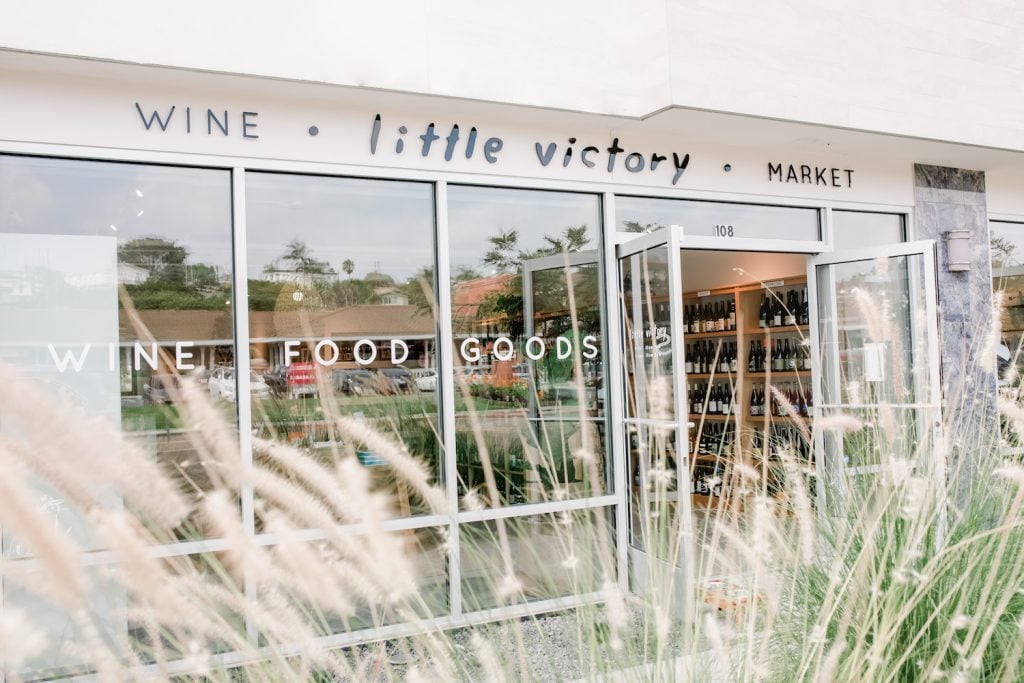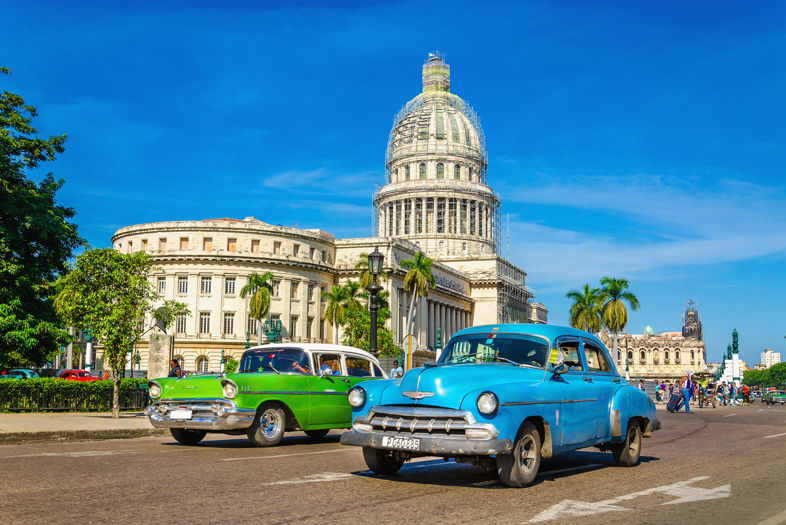Know Before You Go
Bring Cash:
Your credit and debit cards will not work.
There are two currencies:
âCuban nationals spend Cuban pesos, which tourists are discouraged from using. Your money will be exchanged for the tourist currency, Cuban Convertible Pesos (CUC) at a rate of 10-to-1; Cuba imposes an additional 10-percent tax on U.S. currency, plus the 3-percent conversion rate, so expect to receive $87 for every $100 you exchange. You can avoid this fee by bringing Mexican pesos, Canadian dollars, or Euros.
Leave your fine dining side at home:
While more upscale spots are opening, dining options are mostly paladares, or casual, family-owned spots that offer similar cuisine (think chicken, seafood, pork, rice, and beans) at extremely affordable prices.
Souvenirs:
âLeave room in your suitcase for rum and cigars—you’re allowed to bring home $100 worth, total.
The first thing you notice as you land at Havana’s José Martí International Airport (named after Cuba’s revolutionary hero) is the humidity. Second are the cars. Havana truly is a car-lover’s paradise, with 1950s American classics at every turn. A colorful array of mint-condition, government-subsidized Chevys and Fords serve as taxis awaiting tourists at major attractions, while thousands of shabbier models putter around town, held together by duct tape, staples, hopes, dreams, and serious screwdriver skills. It’s not uncommon to hitch a ride with a 19-year-old who’ll proudly tell you the ’53 or ’57 car he’s driving has been the only one in his family for decades. The third thing you can’t miss: the propaganda. Billboards shouting “Viva Cuba Libre!” and “Socialismo o Muerte!” and the image of Che Guevara are widespread, reminding visitors—particularly Americans—that you’re really not in Kansas anymore.
Cuba. Those four little letters have packed a powerful punch in the world of U.S. economics and politics since the revolution rocked this island nation nearly six decades ago. The upheaval changed the face of its people and its relations with the rest of the free world. Thanks to the leadership of Fidel Castro and his association with the former Soviet Union, the country that lies just 90 miles south of Florida has been an enduring pariah in the eyes of the United States, which enacted an embargo on Cuba during the Kennedy administration. Once a playground for high rollers and gangsters, the island has been forbidden to American travelers since 1963. As a result, Cuba has remained a land trapped in time, struggling under the economic effects of el bloqueo (the blockade) and holding on to a mystique that has piqued the interest of many wanderlusting Americans.
Our trip came at a pivotal time in the island’s history: In December, President Obama resumed diplomatic relations with Cuba; in July, the U.S. embassy in Havana opened for the first time in half a century. While travel restrictions have eased a bit over the past few years, Americans are still unable to travel freely as independent tourists to Cuba and must qualify under one of a dozen categories—academic, journalistic, or relief travelers, for example. (Visit treasury.gov for a full list.) While the future of American travel to Cuba remains uncertain until Congress can agree on repealing the embargo, the optimism of the Cuban people, who remain under the thumb of “the social project” with economic rations and limited options, is palpable.
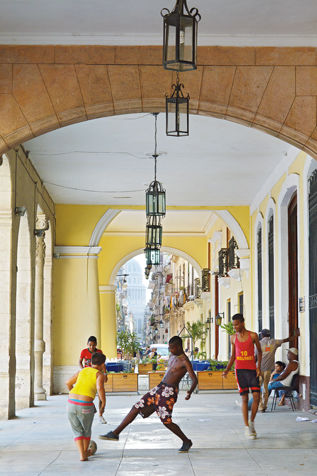
Destination: Havana, Cuba
Pickup fútbol in Old Havana’s Plaza Vieja
Havana itself is striking. Built along a five-mile malecón, or seawall, the city of roughly 2 million people dates back to the early 1500s. Its historic old town, Habana Vieja, is a maze of crumbling Colonial buildings, Spanish-style plazas, and lived-in corridors with laundry lines crisscrossing above and timba music pulsing from open doorways, merging tourist shops and the real life of Cuban urbanites.
In Habana Vieja you’ll find two Hemingway haunts, La Bodeguita del Medio and El Floridita, where you can sip his favorite mojitos and daiquiris for the price you’d expect at a tourist trap (about $7, still relatively inexpensive by American standards). No matter where you go, you’ll find the key ingredient—Havana Club rum. You also can’t go far without hearing the unmistakable beat of a live Cuban band, and can dance all night at popular venues like El Gato Tuerto near the Hotel Nacional de Cuba, a historic landmark in the Vedado neighborhood, or Casa de la Música, in Miramar, a ritzy area filled with resorts, embassies, and the mansions of political elite.
Anticipating an influx of U.S. tourists, historic hotels are being renovated and reopened as boutique hotels like the NH Capri La Habana, and chic new restaurants cater to Americans. Still, the infrastructure of the city is not yet prepared to handle the millions of tourists it’s been missing for the past 50-plus years. If you come expecting comfort and customer service, think again. What it lacks in amenities, however, Cuba more than makes up for in culture, history, and invaluable perspective on the impact of socialism and a trade embargo on a nation and its people. A short stay there will open your eyes to the effects of consumerism, and just might make you reconsider the value of material possessions. Go now before too much change turns a striking city, poor in economy but rich in passion, into any other of its capitalistic Caribbean neighbors.
More Cuba:
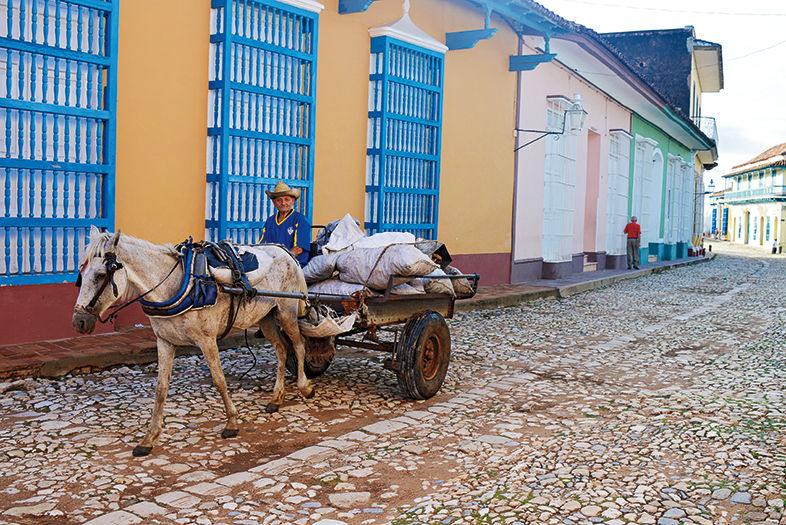
5 Must-Sees in Havana
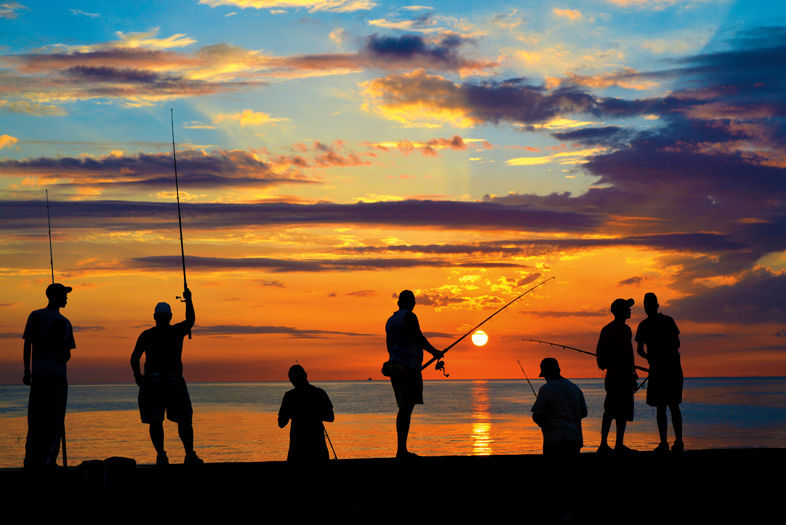
Getting to Cuba
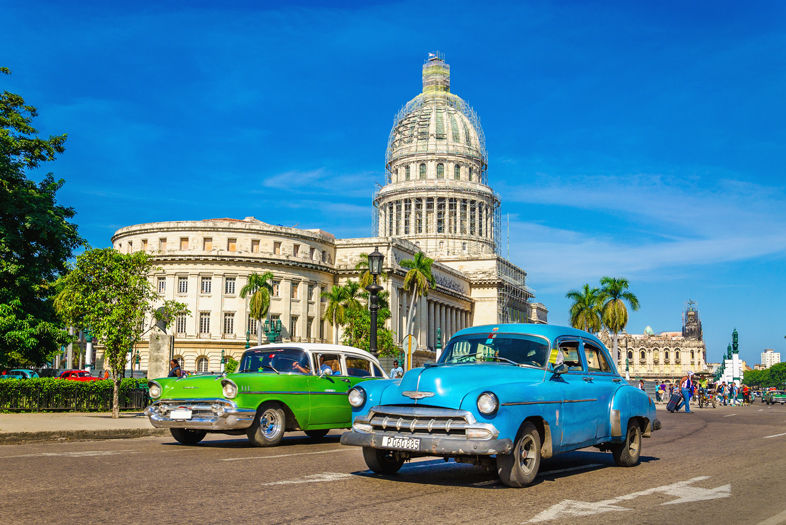
Destination: Havana, Cuba
Classic rides in front of El Capitolio | Photo by Christina Orlovsky Page


